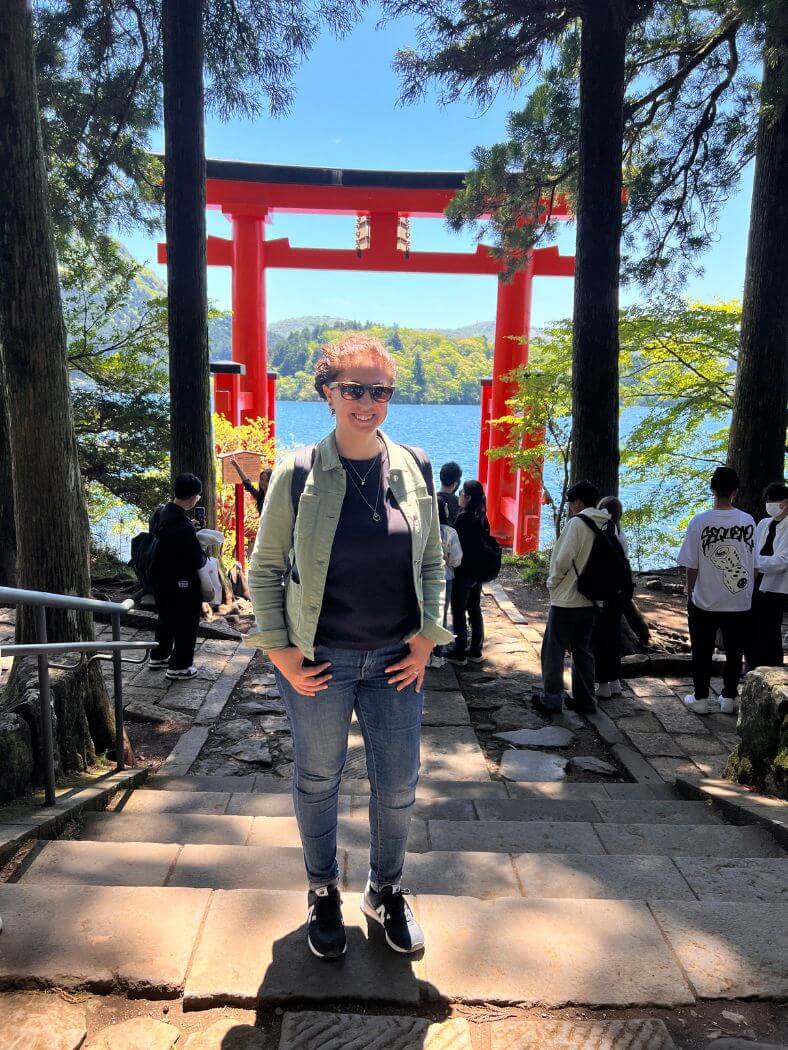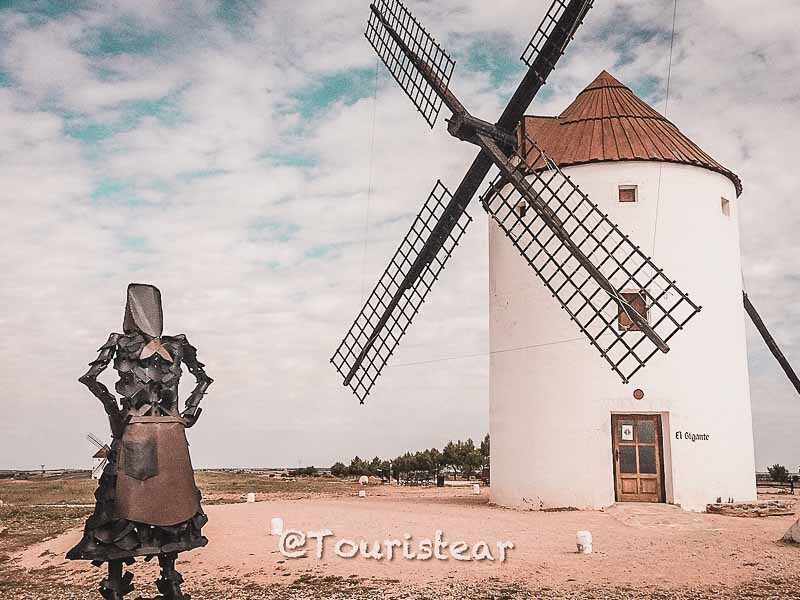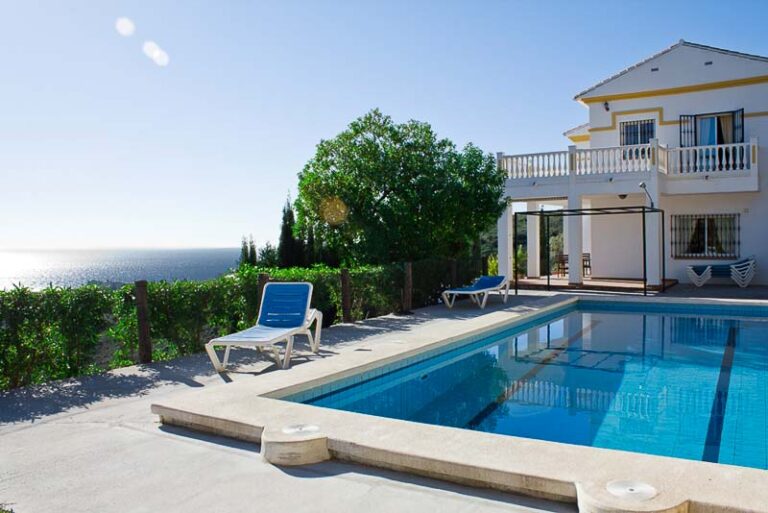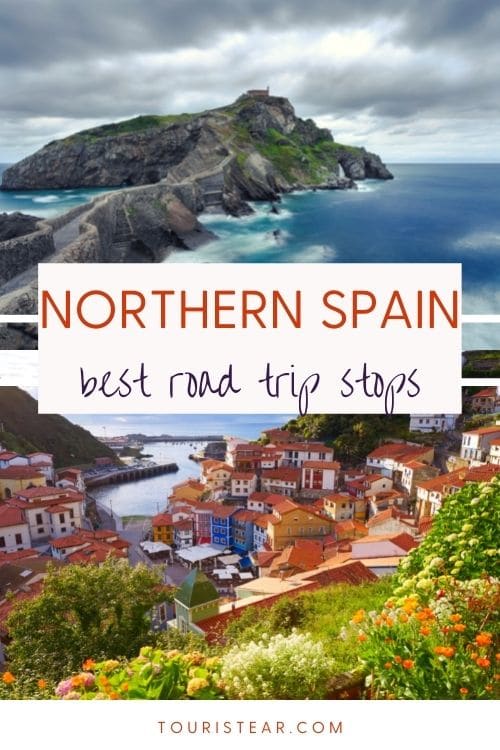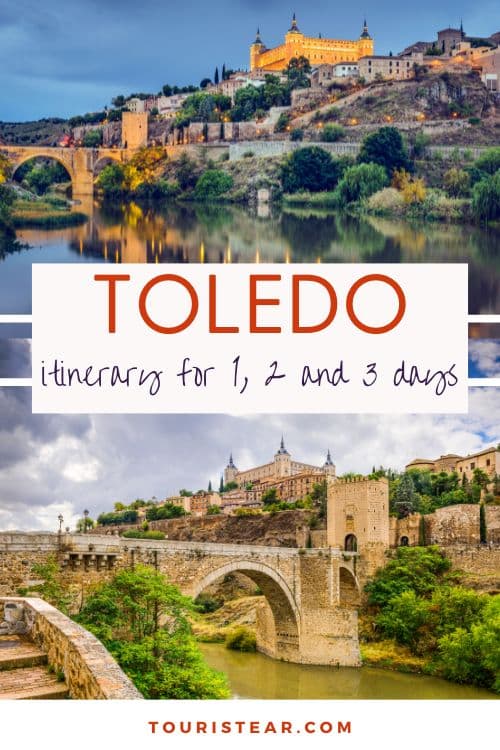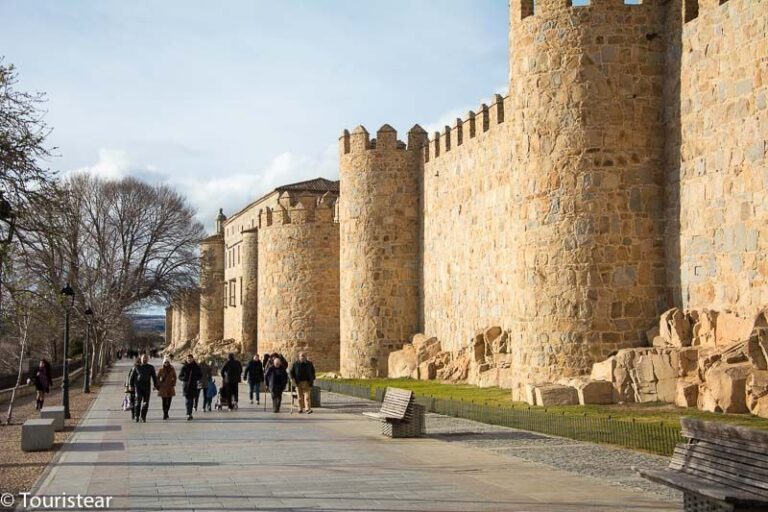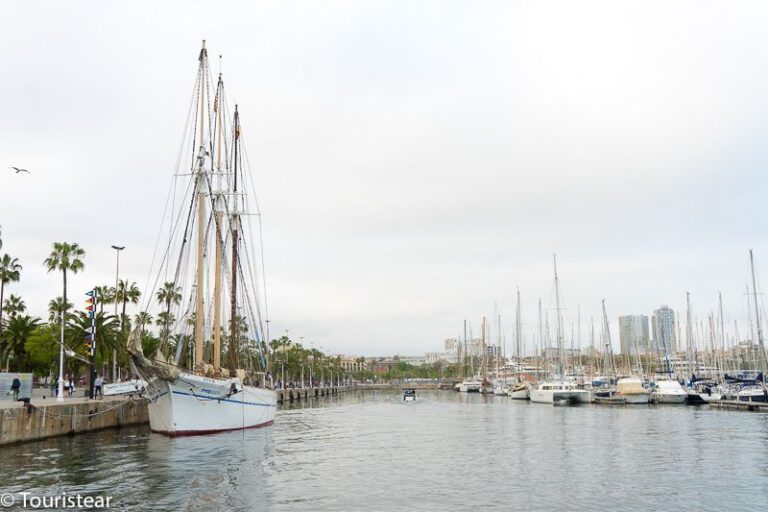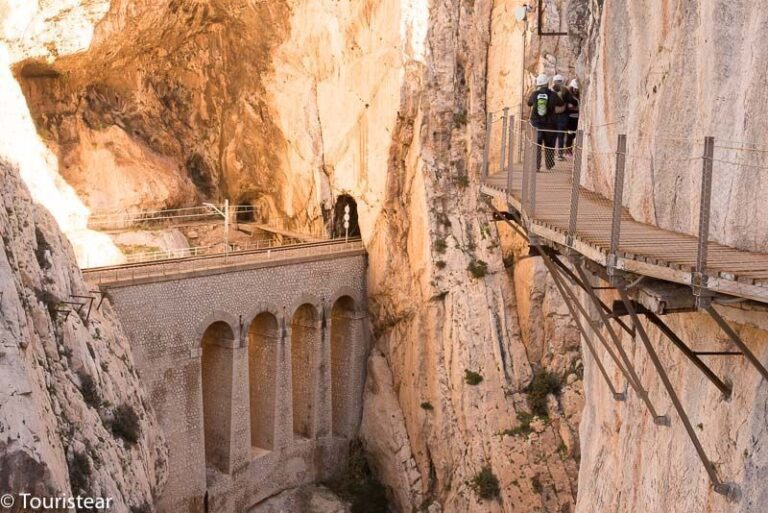Best Things To Do in Mota del Cuervo, Cuenca’s Mills
Do you know Mota del Cuervo? It is located very close to Madrid, about 150 kilometers away, in the province of Cuenca, and has many attractions that will surprise you.
They say that Mota del Cuervo is the “Place of La Mancha” from Don Quixote. And there is a local Cervantes route.
Mota del Cuervo is also known as the Balcón de la Mancha, as it is located in a mountain range, where the mills seen from the road are located.
The Route of the Order of Santiago and Don Quixote also pass through here.
Best Things To Do in Mota del Cuervo in 1-Day
We begin the visit to Mota del Cuervo with the mills. They are a group of 7 windmills, all restored, each with its name.
In the El Gigante mill, there is also the tourist office, and they also put it into operation to grind the cereal and thus obtain flour.
Windmill “El Gigante” of Mota del Cuervo
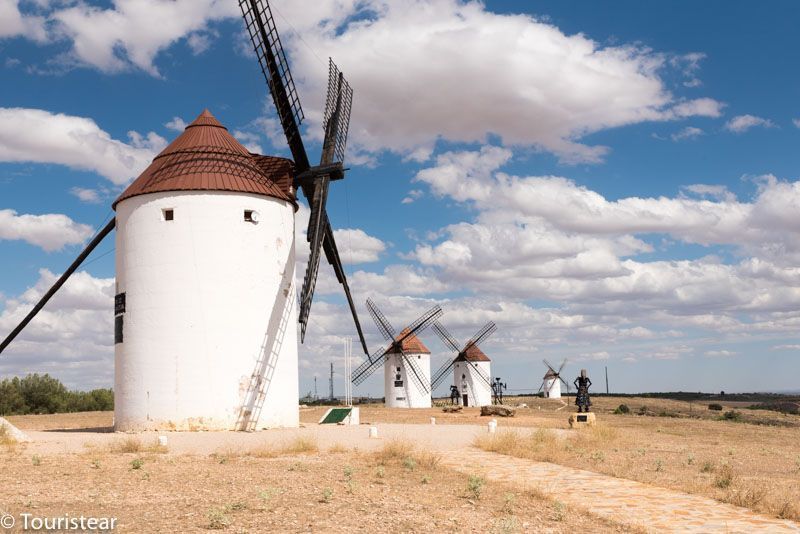
During the visit to the Giant mill, they explain everything about how the mill works.
You can see the mill inside, the machinery made of wood is very curious, and every Saturday morning, the traditional “grinding” is held, in which this mill grinds wheat again, and you can see it in action as it was long ago.
Visit Mota del Cuervo’s Town
Now we head towards the town, to the neighborhood of Las Canteras, an old area of Mudejar origin, and we continue our visit at the Pottery Museum, right in front of the Plaza de la Cruz Verde, a symbol of the Inquisition.
Pottery Museum
This museum is quite a discovery; it is not very big, but the truth is that we were lucky. Our guide made it enjoyable, and we learned some curious things about the pottery in Mota del Cuervo.
For example, women made the pitchers and all the pottery pieces. The men were in charge of cooking and selling pitchers.
At the museum entrance is the last pitcher oven in the town, which is still used once a year to bake the pitchers. Curiosity about these ovens is that they are filled through the chimney.
Remains of Neolithic and Roman ceramics have been found in Mota del Cuervo, and they have even found a little bit of Mudejar ceramics.
The peculiar moteña pottery has been essential and a complement to the agriculture of the people of La Mancha. A totally recommended visit.
Mota del Cuervo has a rich heritage that we have to visit, the different Hermitages and the Parish Church of San Miguel Arcángel or the different town squares that complete our view.
To stay and eat, we chose the Hotel Mesón Don Quijote, it is well-located, and you can walk everywhere.
Visit Mota del Cuervo’s Old Town
Wandering through the corners of the town, we recommend that you visit several points of interest that tell the story of Mota del Cuervo:
The Plaza Mayor (Main Square) is located in the center of the town and has beautiful civil architecture buildings: the town hall, the Courts, and the stately homes of past centuries.
The town hall is an elegant and recently renovated building. At first, it was a monastery of monks (although it is not 100% confirmed), then a part served as a prison.
The clock tower with the bell tower that belongs to it indicates that it was previously a religious building.
Another building worth seeing is the old Hospital de Pobres, on Calle Hospital 25. Right now, it is pretty deteriorates, and you cannot visit inside. It was built in the times of Cervantes and used as a hospital.
The Plaza de Cervantes, formerly known as Plaza del Mercado or Plaza del Toril. The name of Cervantes was given to him in 1922.
The previous denominations came from the activities organized in the square: markets and bullfights.
The Parish Church of San Miguel Arcángel is a simple but impressively large building built in the 16th and 17th centuries.
You can see the influences of the Order of Santiago in its finishes. It is part of a group of religious buildings in Mota del Cuervo.
Along the way, don’t forget to stop at one of the restaurants to try the typical dish of Castilla-La Mancha.
I suppose that in any of the establishments, you can eat ratatouille from La Mancha accompanied by exquisite cheese from the region.
The streets of Mota del Cuervo are worth walking calmly and looking up. However, do not miss the opportunity to see the stately architecture of the town and look for the manor houses.
One of the most beautiful examples is located on the corner of Calle Mayor Baja and Calle Hospital and belonged to Diego Chico de Guzmán y Figueroa, the first member of the Counts of Campillos.
Between the town hall and the Aljafería Museum is the Hermitage of San Sebastián or the Ermita del Santo. It is a 16th-century building with a cross-shaped floor plan.
Formerly it was used as a hospital for the monks who passed through here begging.
In the Plaza de la Tercia, we find a large building, La Tercia.
Built in the fifteenth century, it was used to store the wheat collected as a tithe from the peasants. At the beginning of the 20th century, it became municipal property and has been declared a Site of Cultural Interest.
Festivities of Mota del Cuervo
Festivities of the Virgin of Manjavacas
They are the patron saint festivities of Mota del Cuervo and take place at the beginning of August.
The celebration of the feast of Our Lady of Manjavacas begins with the Brought on the shoulders of the Patron Saint from the Hermitage, located 7 km away.
This happens on the first Sunday of August and, two weeks later, on the third Sunday, the Carried takes place, when the Virgin returns to the Hermitage.
The most original thing about this tradition is that the Bringing and Carrying are done running! These festivals were declared of Tourist Interest in 1977.
Festivities of San Agustín and the Virgen del Valle
They are the second patron saint festivities of Mota del Cuervo. They take place every year on August 28 and 29.
The two saints are patron saints of the Barrio de las Canterías and the stonemasons.
Festival of the Lluecas
It is celebrated on the second Sunday after Carnival.
The town’s inhabitants meet at the windmills with “la Llueca,” a round bun to which some balls of anise are added, consumed while a song with the same name is sung.
Festivities of Santa Rita
Santa Rita is the patron saint of the neighborhood of the same name. Their festivities are in May, and they fill the town with different popular events.
What to See Around Mota del Cuervo?
On the outskirts of the town, several interesting points can be visited in a short break:
Snow Well
Among the Mota del Cuervo mills is this exciting dome. Its exact age is unknown, but it is one of the few preserved in the Iberian Peninsula.
It was used to accumulate snow during the winter and then during the rest of the year for food, cool rooms, or even to cure some diseases.
Hermitage of Manjavacas
The Manjavacas Sanctuary, located here today, was built in the 17th century on top of the remains of the old Manjavacas hermitage.
Before this place, there was a town, but over the years, it was depopulated.
Its construction was decided there because it is where the paths that belong to the Camino de Santiago del Sureste, the Senda de Santa María, and the Camino de Los Valencianos cross.
There is the statue of the Virgin of Manjavacas, the patron saint of Mota del Cuervo, who comes down to the town for her festivities in August.
Manjavacas Lagoons
About 12 km from Mota del Cuervo, one of the most beautiful natural spaces in Castilla-La Mancha, is part of the Manchego wetlands.
The lagoon complex has four lagoons: Manjavacas, Sánchez-Gómez, La Dehesilla and Alcahozo in Pedro Muñoz.
The curious thing is that its water is salty, and they serve as a stopover for migratory birds. As a result, the best time for sighting rare species is during the winter.
Hermitage of Santa Ana
Another building of religious architecture in the area. Very little is known about its history, but it was indeed built at the end of the 16th century.
What is interesting can be seen from the outside: a set of staggered volumes traditional in the architecture of La Mancha.
Hermitage of Our Lady of the Valley
It has a close relationship with the Mota del Cuervo singers. Legend has it that the Virgin appeared to one of them, and Saint Augustine gave him water to drink.
Thus they became the patron saints of the cantaros and the Barrio de las Cantarerías.
Inside it houses images of the two saints who are brought to the town running to celebrate their festivities at the end of August.
Apart from the famous windmills of the Manchega Plain that are of undoubted national tourist interest, the heart of La Mancha has other places of interest that I recommend visiting.
Most of these towns are located along the N-301 or Ciudad Real road, and you do not have to deviate too far.
Santa María de los Llanos
This town of 800 inhabitants deserves a visit mainly for its medieval old town and the Church of the Assumption of Santa María de Los Llanos.
It was built on top of Roman remains in the 13th century and renovated inside in the 16th century. What is most striking are the Romanesque corbels of the cornice.
Prepare a camera with a good zoom to see all the details: birds, a barrel, human heads, some with beards, zoomorphic heads, etc.
Quintanar de la Orden
Some time ago, this town belonged to the Order of Santiago that carried out several important constructions, now disappeared.
Now the most interesting is the Church of Santiago Apóstol from the 16th century, built thanks to the donations of the inhabitants, the Casa Piedra in baroque style from the 18th century, and the Plaza de Toros in Neo-Mudejar style from the 19th century.
Also, try their famous chocolate and if you like to party, remember to stop by Quintanar de la Orden during the carnival season!
Campo de Criptana
The word that best describes Campo de Criptana is mills. Therefore, they were declared a Site of Cultural Interest.
According to literary studies, it was here that Don Quixote and Sancho Panza lived their most famous adventure – the fight against the giants.
Do not forget to walk through the town, with its narrow streets and steep slopes. Book your private tour to know all the details! (Tour in Spanish)
Alcazar of San Juan
Located 37 km from Mota del Cuervo, it is a town with a lot of history, a palace complex, more typical mills of the region, and so famous, thanks to Don Quixote.
It also has a lagoon where ornithology lovers will enjoy watching the birds in their habitat.
You can book your guided tour here. (Tour in Spanish)
Ciudad Real
The tourist door to finish (or start!) the route through Castilla-La Mancha.
A city with a lot of history, culture, beautiful buildings, and good food 🙂
If you have a few hours, really, you don’t need more than a day to go through it! I recommend that you take a walk to get to know its corners.
Book a guided tour (English) during which a guide will explain the most exciting things to you.
***The tours are mostly in Spanish because this area gets mostly local tourists. So if you don’t understand Spanish, you must do the visits yourself. Please, check this page to learn some Spanish words and phrases.
Don Quixote Route
Mota del Cuervo is one of the 13 towns you can visit during the Don Quixote Route. It is a route that passes through places related to Miguel de Cervantes and his most famous work.
If you want to travel the entire route, reserve a week, but you can choose what interests you the most. Look here at the official website of tourism in Spain.
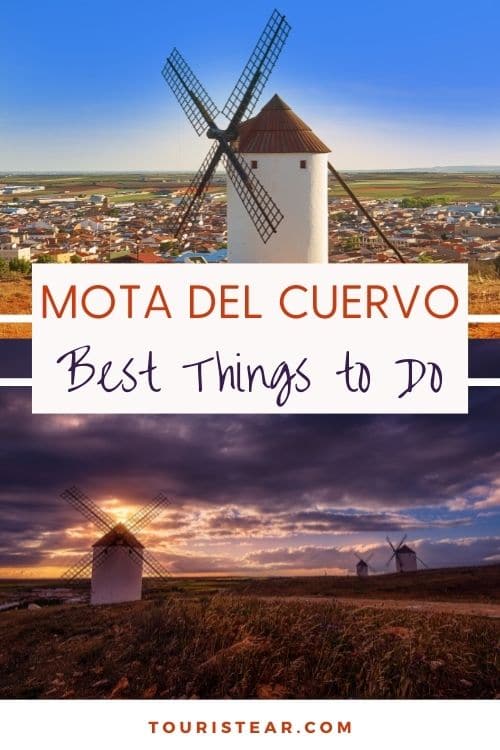
What to See in Belmonte in One Afternoon?
Belmonte Castle
In Belmonte, we will first see its imposing Mudejar Gothic-style castle, which began to be built in 1456.
The Castle is very well preserved, as it has been maintained and restored over the years. So we can see it inside, where we see the different styles of the reforms that have been made.
Since 2010 it has been open to the public, which is why we have been lucky enough to see its interior.
The visit is done with an audio guide, so you can see everything at your own pace while they explain the history and life of the Castle and its people.
The ceilings are impressive, some original furniture is also preserved, and the rooms transport you to different centuries.
The truth is that they have an excellent atmosphere. We can visit the Torre del Homenaje and the dungeons in the basement.
And as a curiosity, on the October bridge (10 to 12), there is a medieval combat tournament in the castle. It has to be worth seeing.
The Collegiate Church of Belmonte
Then we visit the Collegiate Church, one of those wonders you do not expect. It was built in an old Visigoth parish from the 5th century to 1459.
As at that time, there were many nobles in this area, so they began to add chapels to the Collegiate Church, reaching 13 chapels inside. It deserves a quiet visit.
Then we walked around the town and returned to the hotel to rest.
How to get to Mota del Cuervo?
- By car: by the N-420 Córdoba-Tarragona and the N-301 Madrid Alicante
- By bus: from Madrid, they leave from the South Station, the company SAMAR
Where to sleep in Mota del Cuervo?
Here, I leave you the Booking page to look at the prices. You’ll be surprised!
Thanks for collaborating with the Cuenca Provincial Council, the Mota del Cuervo City Council, and the Belmonte City Council.
Plan Your Trip to Cuenca
- What to see in Cuenca in 1 day?
- Best Things To Do in Alarcon,
- Best Things to do in Valencia in 3 day
- Must Visit Places in Madrid
Last Updated on 17 April, 2024 by Veronica
Disclosure: Some of the links on this post are affiliate links, meaning at no additional cost to you, I may earn a small commission if you click through and make a purchase.
Author: Veronica
Vero, a seasoned traveler, has explored 25 countries and lived in five, gaining a rich perspective and fostering an infectious passion for travel. With a heart full of wanderlust, Vero uncovers the world’s hidden gems and shares insights, tips, and planning advice to inspire and assist fellow adventurers. Join Vero and let the shared passion for travel create unforgettable memories.
